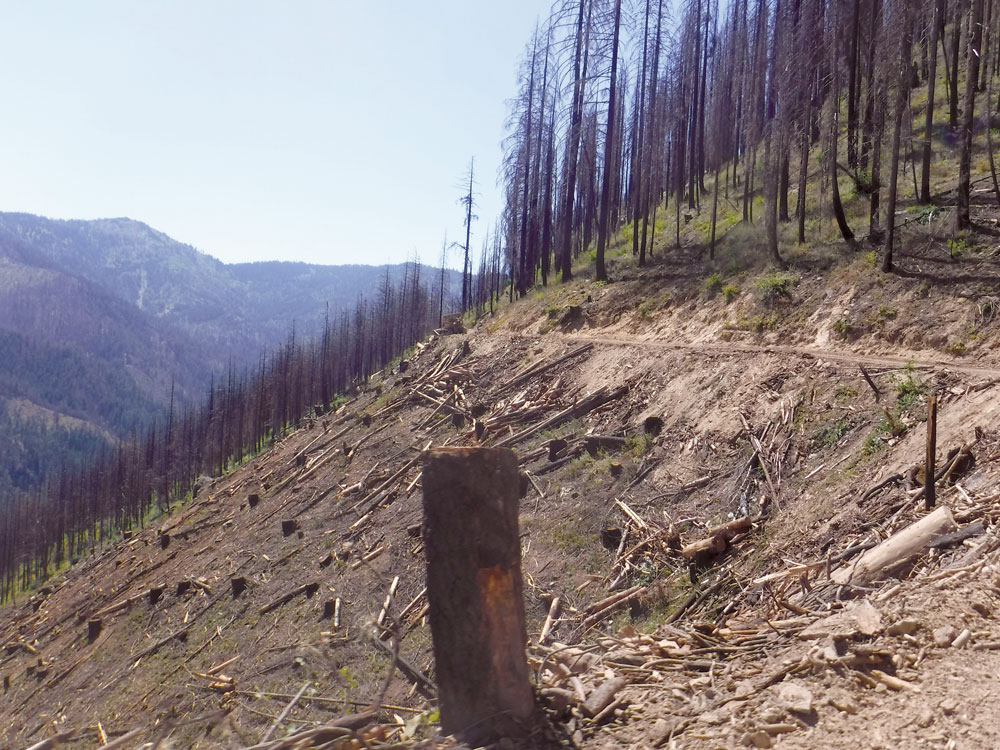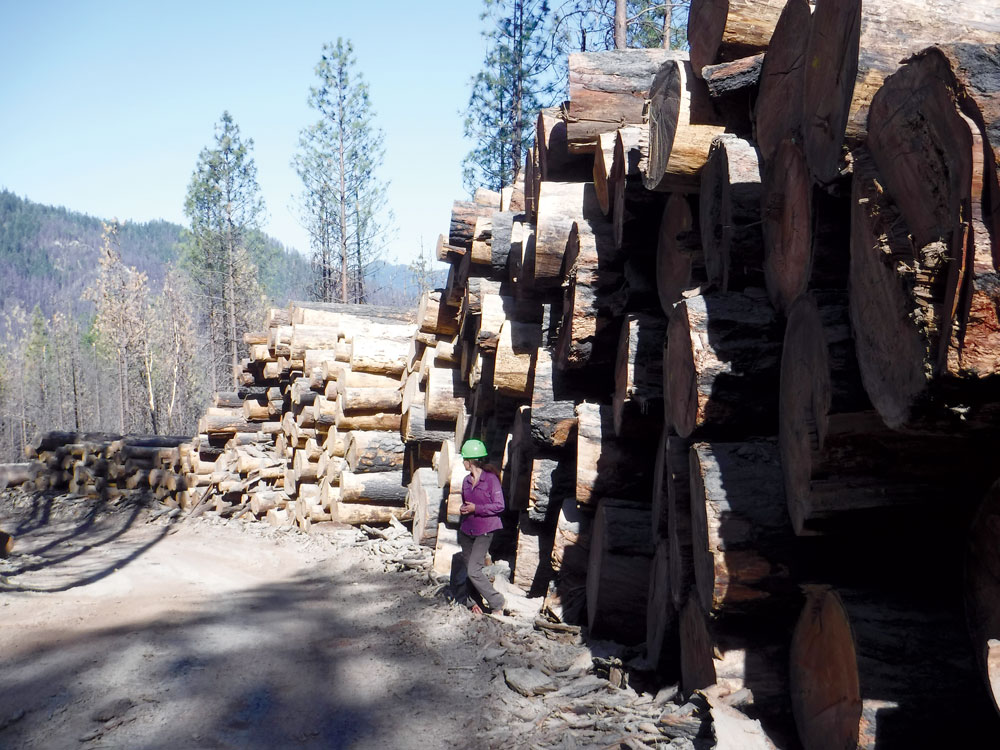Timber Sale Round Up: EPIC Leads the Charge to Oppose Post-Fire Opportunistic Logging Projects

Environmental Protection Information Center
Having trouble keeping track of all the gigantic logging projects currently proposed by the U.S. Forest Service on our public lands? EPIC is here to help break them down and explain the projects and their implications.
The Region 5 Post-Disturbance Hazardous Tree Management Project, which was proposed in 2022, is poised to be the largest timber sale in the United States in modern history. The post-fire logging project includes 5,780 miles of roads and trails throughout California. The “North Zone” of the project, located in our region, includes 2,708 miles of roads and would permit clearcutting 300’ on either side of those roads. Picture a football field sized clearcut on either side of a seldom used forest road. That equates to 187,880 acres of logging in the name of hazard tree management (!), almost 200,000 acres of logging, and would touch nearly every northern spotted-owl Critical Habitat Unit in Northern California. The king-sized project covers nine national forests and is split into three zones across California.

EPIC and allies filed an objection to the “North Zone” of the R5 Project, asking the Forest Service to reduce the environmental impact by retaining living trees, focusing on high-severity burn areas, and limiting the Project to roads that are needed by the public. In addition, we advocated for reducing the extent of logging on either side of the roads and for fully protecting riparian reserves. We believe these are reasonable constraints on a project that otherwise looks more like a massive timber sale than a safety measure.
The Antelope Tennant post-fire timber sale includes 20,000 acres of clearcutting that the Forest Service euphemistically calls “fire recovery” and “fuels reduction.” The Forest Service is pushing this logging through as an “emergency” despite the fact that the fires took place in 2021. The hundreds of projects EPIC has reviewed typically include additional reports on wildlife, soil, hydrology, botany, archeology, etc.; but there is no in-depth information on any of these subjects for the Antelope Tennant project. Take wildlife, for instance: despite the fact that these forests are home to threatened and endangered species, there is zero information provided in the Environmental Assessment.
The Bear Country post-fire timber sale includes more than 4,000 acres of logging within the Wild & Scenic Salmon River watershed. The logging will be concentrated on fire-resilient mature and old-growth forests in the river canyon, and within some of the only occupied northern spotted owl sites in the region. Alarmingly, the project would remove 223 acres of nesting and roosting habitat and 700 acres of foraging habitat for the northern spotted owl “in perpetuity.” Also on the Salmon River, the River Complex project proposes nearly 2,000 acres of post-fire logging in the headwaters of the South Fork Salmon and Scott rivers. The Forest Service plans to clearcut the Taylor/Carter Meadows Late Successional Reserve, which will create more flammable timber plantations.
To top it off, we just received a scoping notice for the FH7 “restoration project” on the Mendocino National Forest, which includes 9,575 acres of commercial logging.
EPIC and our allies have been working hard to comment on and object to these projects to try to ameliorate the damage.
For more information: wildcalifornia.org
